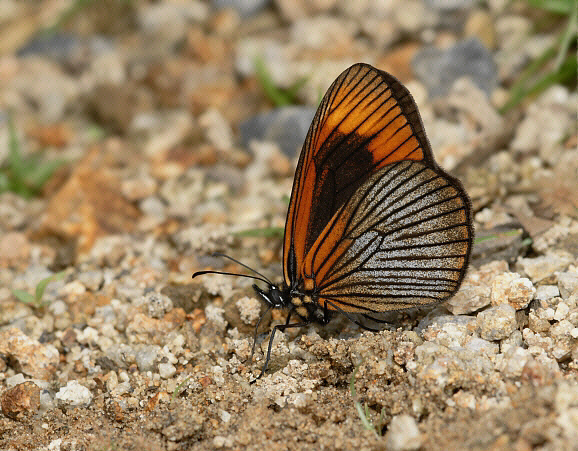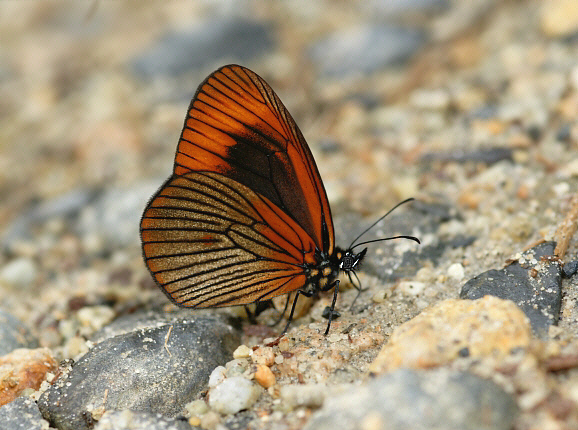
Introduction
There are 1100 known species of Satyrinae in the neotropical region. About 570 of these are placed in the subtribe Pronophilina – a diverse group of high altitude cloudforest butterflies, all of which are confined to the neotropical region. The vast majority are found only in the Andes, but 4 species are known from the Atlantic cloudforests of Brazil, and there are a further 6 species that are endemic to Guatemala, Costa Rica or Mexico. More oddly there is one genus Calisto that is found exclusively on the Caribbean islands of Cuba and Hispaniola.
The genus Lymanopoda is comprised of 57 small species. Many have small white spots arranged in a characteristic undulating line across the wings. In some species such as labda and lebbaea there are beautiful marbled white markings on the underside hindwings. Almost all Lymanopoda species are restricted to the Andes, the only exceptions being cinna which is Guatemalan and euopis which is Costa Rican.
Lymanopoda acraeida was formerly placed in the genus Trophonina, but phylogenetic analysis has resulted in its transferral to Lymanopoda. The underside wings of this species exhibit a remarkable resemblance to members of the genus Altinote ( Heliconiinae, tribe Acraeini ).
Lymanopoda acraeida has 3 subspecies, found in Ecuador, Peru, and Bolivia.

Habitats
This species breeds in grassy cloudforest habitats at altitudes of about 1400-2500m.
Lifecycle
The lifecycle appears to be unrecorded. The following generalisations are applicable to the subtribe Pronophilina and probably also apply to Lymanopoda: The eggs are round, white or pale greenish white, and laid singly on the foodplants or on surrounding vegetation. The larvae are typically pale brown, marked along the back and sides with narrow dark stripes, and tapering towards each end. The head is large in proportion to the body and has two short forward-pointing horns. The tip of the abdomen is equipped with a pair of caudal prongs which are used to flick the frass away from the feeding area. The larvae of all known Pronophilina feed on Chusquea – a genus of bamboo which grows in thickets, mainly along the courses of streams.
Adult behaviour
Males are usually seen singly or in two’s and three’s, imbibing moisture from damp sand or gravel along roadsides, often in the company of other Pronophilines.
